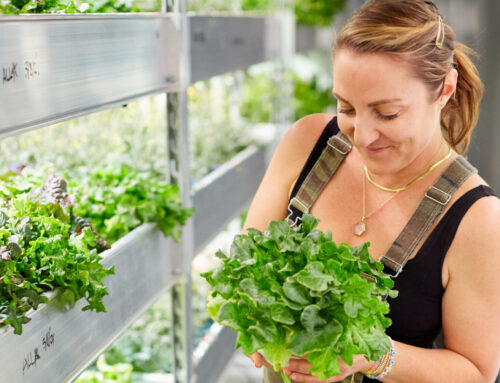If the idea of a hanging basket brings to mind those little ivy-filled plastic buckets sold at the grocery store, read on. With a little research, you can create a lush suspended landscape, whether it’s an herb or vegetable garden or a flowering basket that packs a big punch of color and character. Get creative, but before you get going, make sure you have the basics down.
HOW WILL YOUR GARDEN GROW?
Before you break out the gardening gloves, plan your basket.
“One of the biggest mistakes is that people pick plants that are too tall for hanging baskets, or they pick plants that are just not compatible,” says Mark Ruibal, owner of Ruibal’s Plants of Texas.
Instead, go for low-lying or trailing plants.
“You need to know if you want something that’s going to get huge or stay small, and if you want it to bloom color or not,” says Chris Brumley, owner of
And give some thought to where your basket will hang. For sunny spots, safe bets are petunias, geraniums, periwinkles, bacopa and million bells. If your basket will be in the shade, you might want to try begonias, impatiens, alyssums, and torrenias. But check with a neighborhood gardening center, as these plants are only available seasonally.
RULES OF CONTAINMENT
Wire baskets are popular because they’re virtually indestructible. But if you use a wire basket, you’ll need to line it with sphagnum moss.
“Some people say you need to soak the moss for an entire day, which is just ridiculous,” Ruibal says. “You really just need to soak it so that it’s totally wet.”
Then you’ll need to flatten it out — “like you’re making little pancakes,” Brumley says — until it’s about half an inch thick. The moss will help your plants retain moisture and lend a more natural look. An alternative to sphagnum moss is Magnimoist, a fiber liner sold by the foot, and cut into custom shapes to fit baskets.
“It’s great because it’s ready to go — you don’t have to wet and mash it, it’s a natural, renewable crop, and it tends to hold up longer than some of the other mosses,” says Leslie Finical Halleck, general manager of North Haven Gardens.
But don’t be afraid to think outside the box, or rather basket, when you’re picking a container. “Pretty much anything that you can drill some holes into and attach a chain to can be used as a hanging basket.” Halleck says. “Look through your garage or at local thrift shops for creative containers, like a old copper cooking pot, an interesting watering canister, or even an antique teapot.”
Just make sure whatever you use, you drill a drainage hole into the bottom.
BABY THAT BASKET
When it comes to hanging basket care, “underwatering is a big mistake,” Brumley says.
In the spring, watering three times a week is probably enough, but in the summer, you’ll need to water about once a day.
“A lot of people also don’t realize you have to fertilize hanging baskets,” Brumley says. Time-released granular fertilizers are a good idea because they cause the plant to bloom.
“Also, don’t be afraid to trim the basket when it gets overgrown,” Ruibal says. “Pinch off the old blooms to get new flowers to grow.”
SPICE IT UP
If you have a green thumb and a knack for cooking, you might want to try an herb or vegetable hanging basket. These varieties tend to need a little more overall TLC, but they are pretty to look at and could save you a few trips to the grocery store.
Vegetables that typically do well in a hanging basket are cucumbers, chili peppers, chives and tomatoes.
“We did a huge vegetable basket here last summer, and it did very well,” Brumley says. “In fact, it did so well, we had someone taking vegetables from it.”
And herbs such as basil, sage, thyme and chamomile also thrive in hanging baskets. Most herbs like a lot of sunlight, but mints tend to fare well in the shade. In fact, there are so many types of mint, a true tea-lover could make an entire basket of various mint plants: chocolate mint, orange mint, lemon mint, pineapple mint, peppermint and spearmint.
“Thyme is a trailing herb, so it looks very pretty in hanging baskets, and curled parsley makes for a great centerpiece because it’s this very lovely emerald green,” Halleck says.
She also recommends using a container, as opposed to a moss-lined basket, because, “herbs love drainage,” and says an organic herb food is also a good idea.






